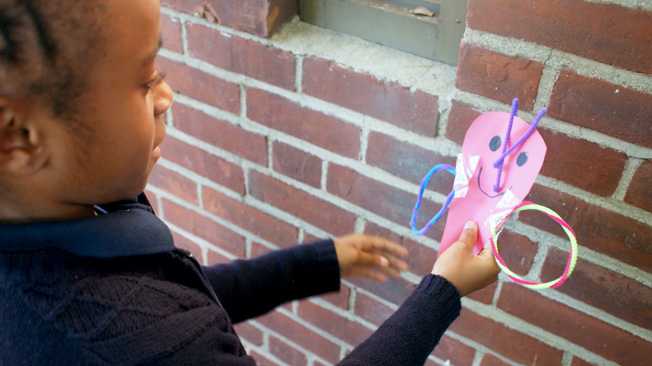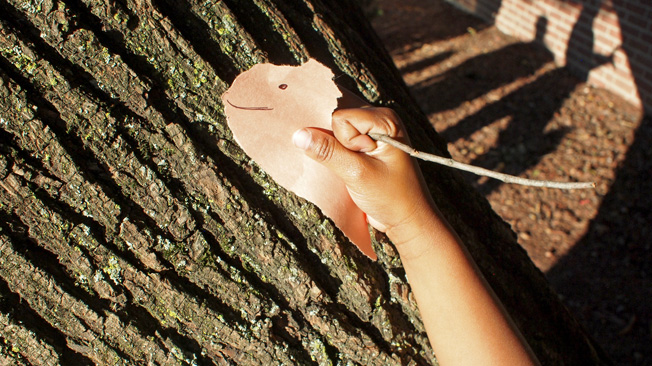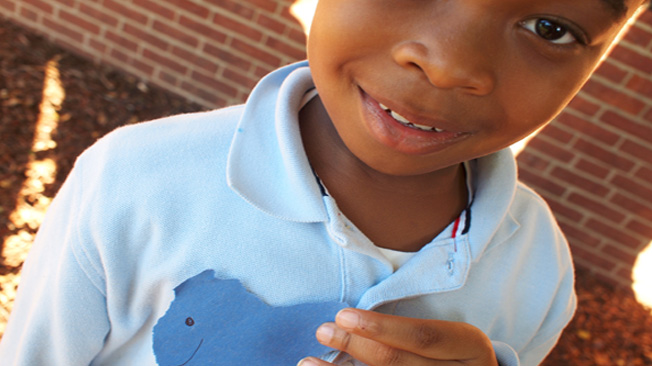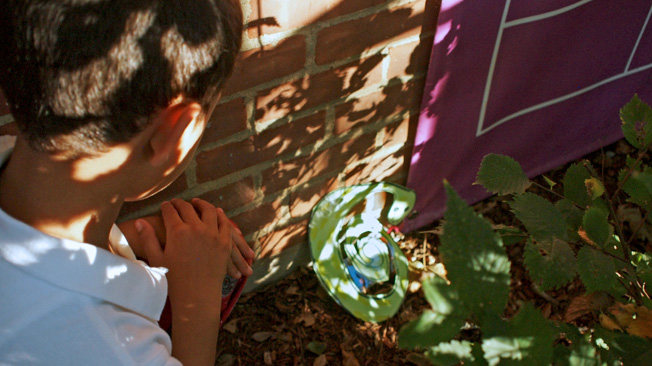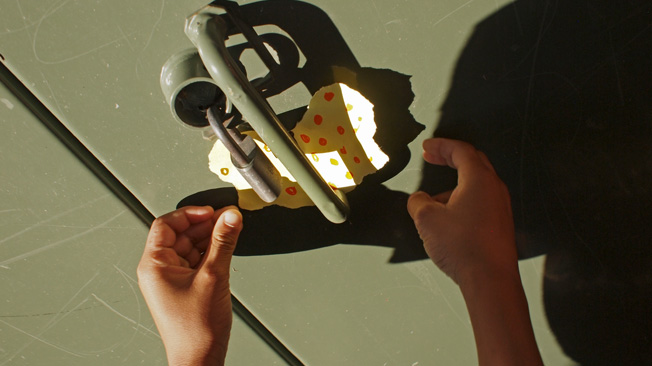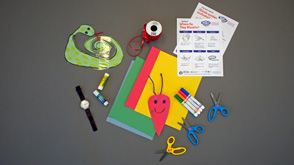Hiding in Plain Sight
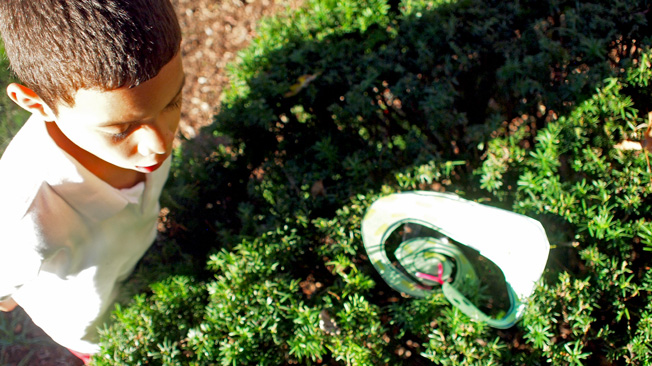
What Is This Activity?
How do predators and prey animals use camouflage to survive? Kids play two predator-versus-prey games. Then, they use art supplies to make camouflaged animals and test their creations in a hide-and-seek game.
Introduction
Learning Goals
Big Science Idea:
- Animals use different strategies to avoid danger or catch food, including being hard to see.
Skills kids will use to investigate the idea:
- Model predator-prey interactions
- Test and communicate new ideas and information about how camouflage (among other strategies) helps predators and prey survive
- Observe and test how colors, shapes, and patterns can camouflage an animal
How Do You Get Ready?
- Read the activity and gather the materials.
- Scout out a green space with lots of places to hide (if possible), such as your program's yard, a park, or a playground. If you must use a space that doesn't have places to hide, substitute the "Pasta Predators" activity for "Blending In."
- Troubleshoot safety concerns (traffic, poison ivy, sharp objects, etc.).
- Print out a copy of the "Where Do They Blend In?" handout (for "Blending In" activity). Cut out the cards.
- Optional: Look over all the "Animal Fact Cards" for animals that live in your area. Print and cut them out to supplement the handout.
- If you don't plan to show the "The Brick-Eating Ivy Mystery" video that is paired with this activity on the website, watch it ahead of time and note key concepts to share with kids during the activity.
Warm-up 10 minutes
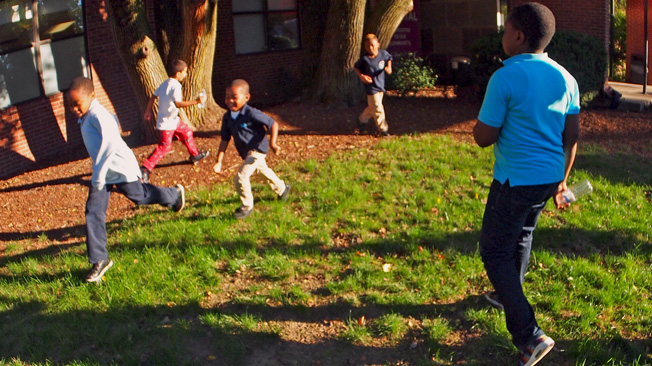
(Science Skills: Model predator-prey interactions)
Raptors and Rodents! Kids play a variation of the predator-prey tag games Run, Rabbit, Run! or Sharks and Minnows, substituting animals commonly found in neighborhood green spaces.
- Mark the boundaries of the playing area with ribbon or string.
- Pick two people to be raptors (birds that hunt, such as hawks or falcons). All other players are rodents (e.g., squirrels, rats, mice).
- Raptors and rodents stand on opposite ends of the playing area.
- Remind players that all animals must eat to survive. In this game, the raptors try to make a meal out of the rodents!
- To start the game, the raptors call out "Run, rodents, run!" The rodents try to run across the playing area without getting tagged by a raptor.
- Tagged rodents turn into raptors and chase rodents.
- Count: How many rodents made it to safety?
- Choose two new raptors and play another round. As time allows, keep playing to give lots of kids the chance to be raptors.
- Discuss: How did it feel being a rodent? How could you increase your chances of survival? (One of many strategies is to make it harder for raptors to see you by hiding or trying to blend in with your surroundings.)
Activity 30-45 minutes
Blending In
(10-15 minutes)
(Science Skills: Test and communicate new ideas and information about how camouflage helps predators and prey survive)
- Discuss: Think about a time you've had to hide—like when you've played a game like Raptors and Rodents or hide-and-seek. When hiding, what are some ways that you can keep from being seen? How do you move and act? What do you wear? Where are good hiding places? Revisit these questions after the activity.
- Discuss: Who in the group is wearing something that blends in well with our surroundings? Who stands out? Introduce the science word camouflage. Camouflage is using appearance and behaviors to blend in. Camouflage allows animals to avoid being seen without having to hide.
- Play a quick Cool Colors game. Call out "Find kids who are wearing the same color…" followed by these categories: shoes, tops, bottoms, eyes. For each category, players scramble to group themselves by color.
- On your signal, give kids 30 seconds to find a place where their clothing helps them blend in. No hiding! They should stand motionless in front of the place—not behind, under, or inside it.
- As you look for and round up the camouflaged kids, remark on how easy or hard each one is to see.
- Ask: What could they wear to blend in better? What animal might blend in well in their chosen spot?
- Ask for a volunteer to read aloud an animal card. Then call out the name of the animal and challenge the kids to find the best spot for them to blend in, such as dirt, fallen leaves, tree bark, grass, and other plants. Repeat with each card.
- Discuss: It's obvious why prey animals blend in, but what about predators? (They can get closer to prey that doesn't see them.) Why might an animal not blend in? (Many reasons, such as wanting to attract a mate. Or they might not need to blend in. If they taste bad or have spikes, those defenses could keep a predator away.
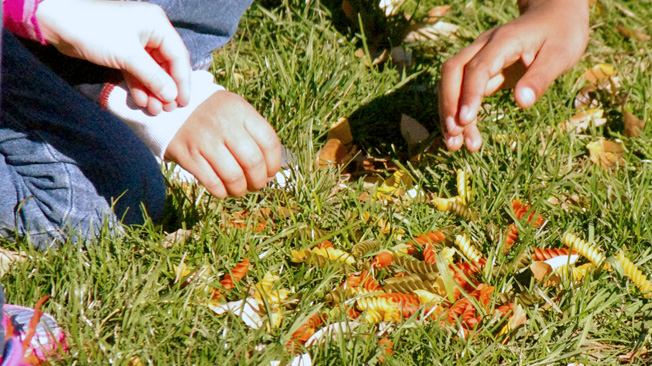
Pasta Prey
(10-15 minutes)
(Science Skills: Test and communicate new ideas and information about how camouflage helps both predators and prey survive)
This is an open-space alternative to "Trying to Blend In."
- With two boxes of pasta (plain and tricolor or green) and a timer or watch, gather in an open area (grass, sand, or dirt work best).
- Ask kids to turn around and close their eyes while you scatter plain pasta all around.
- On your signal, kids have one minute to pick up as many pasta pieces as they can find and drop them back in the box.
- Count the pieces. Then, repeat the activity with the tricolor pasta.
- Compare data: Which colors were hardest to find? (Answers will vary, but generally those that blend in with the ground.) How does this game show how camouflage helps prey? (Camouflage helps make prey harder for predators to see.)
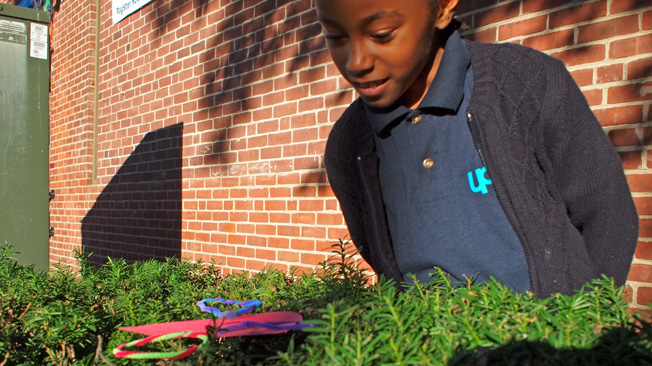
Camouflaged Creatures
(20-25 minutes)
(Science Skills: Observe and test how colors, shapes, and patterns can camouflage an animal)
- Have kids make camouflaged creatures out of construction paper or bend pipe cleaners into animal shapes. Make sure the creatures aren't too small to find!
- Guiding questions: To blend in, what color or colors should you choose? What can you add for better camouflage? (e.g., patterns and textures) Is your creature a predator or prey? Where does it live? When is it active: night, twilight, or day?
- Play hide-and-seek with the creatures outdoors. Half the group turns and covers their eyes while the other half takes one minute to hide their creatures and return to start. The seekers uncover their eyes and look for hidden animals for three minutes.
- Have kids count the animals found, switch roles, and play again.
- Optional: Take pictures of each kid with their creature. Use Plum's Photo Hunt app and send pictures to Plum on the PLUM LANDING site.
Wrap-up 5 minutes
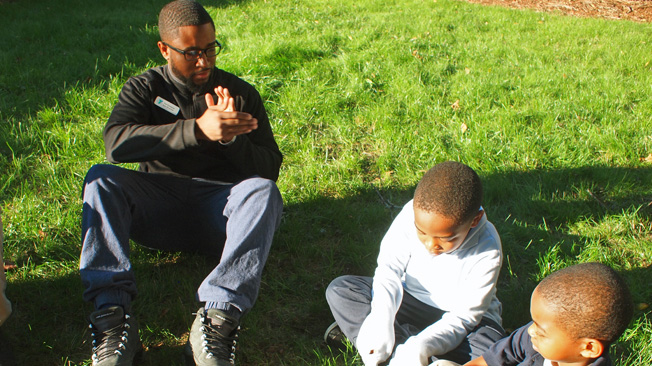
(Science Skills: Communicate new information about strategies predators and prey use to survive)
- Explain that camouflage increases an animal's chance of survival. Discuss: What other defenses do prey animals have? (Toxins like venom; teeth, claws, quills, stingers and other weapons; hard shells to protect the body, etc.)
- Discuss: How do humans use camouflage? (A few uses are: Military, hunting, nature observations, playing hide-and-seek and similar games.) How could what you learned today make you a better hide-and-seek player?
- If you haven't already, send home "Explore Animals Around You" handout to provide families with ideas on how to continue investigating animals together.
Explore Some More
Animal City
Show kids a small, realistic plastic or rubber toy: a snake, spider, mouse, or other animal that lives around people. Ask them to draw or paint a city or town habitat in which the animal would be hard to see.
Plum's Creaturizer App
If a mobile device is available, have kids use Plum's Creaturizer app to design a creature and then take photos where the creature might find food, raise its young, look for water, and hide.
Explorer's Notebook
Use the template provided: Have kids write about and sketch their "Camouflaged Creature."(Optional: Print and add the photos of the kids with their critters.) Guiding questions: In addition to the camouflage questions in the activity, ask kids about their creature's favorite food, whether it lives alone or in groups, if it lays eggs, and other features.

